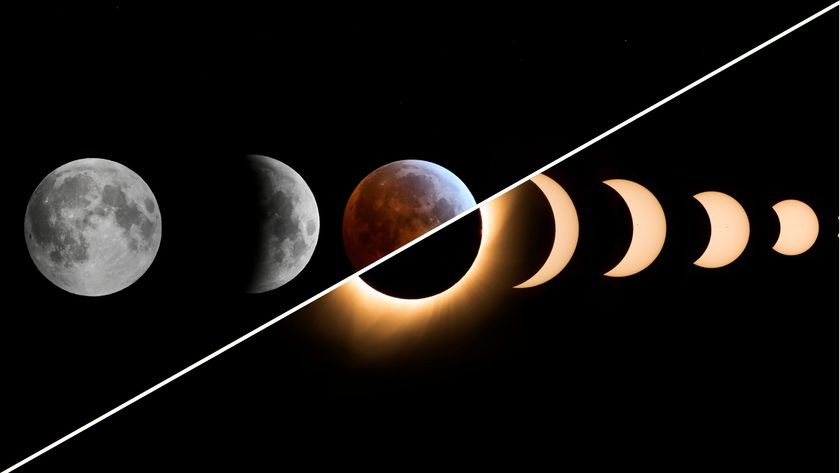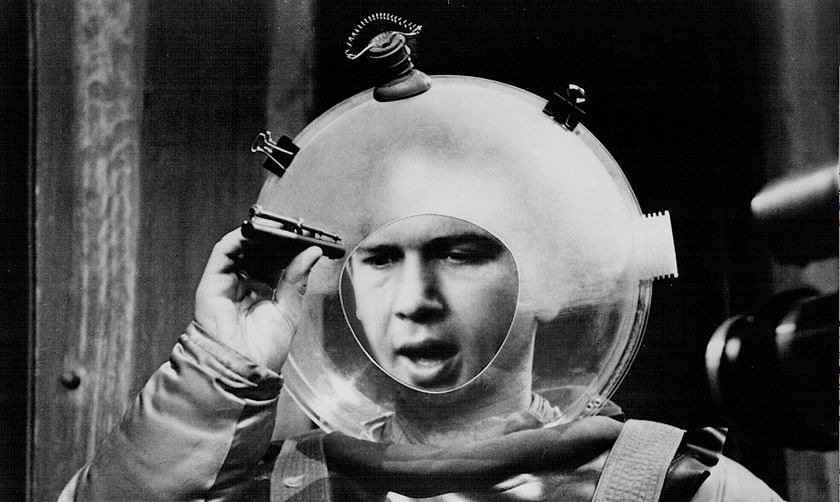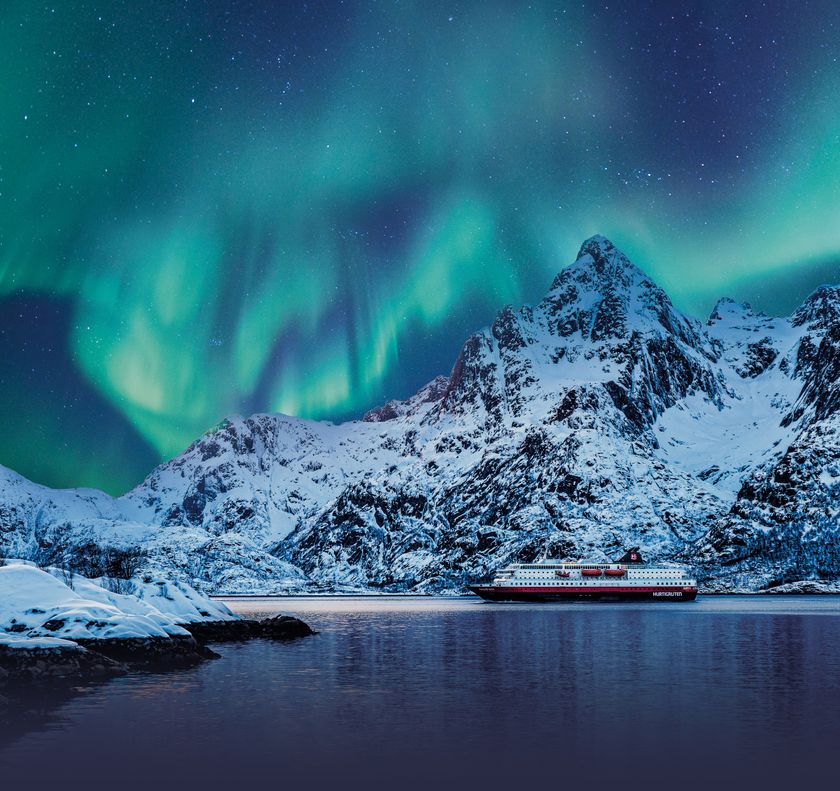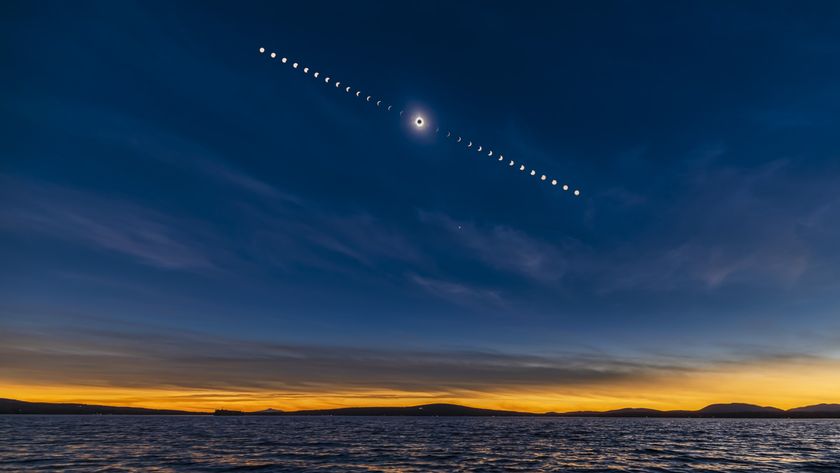Enceladus: Everything you need to know about Saturn's bright, icy moon
The small icy moon is one of the solar system's most intriguing destinations.
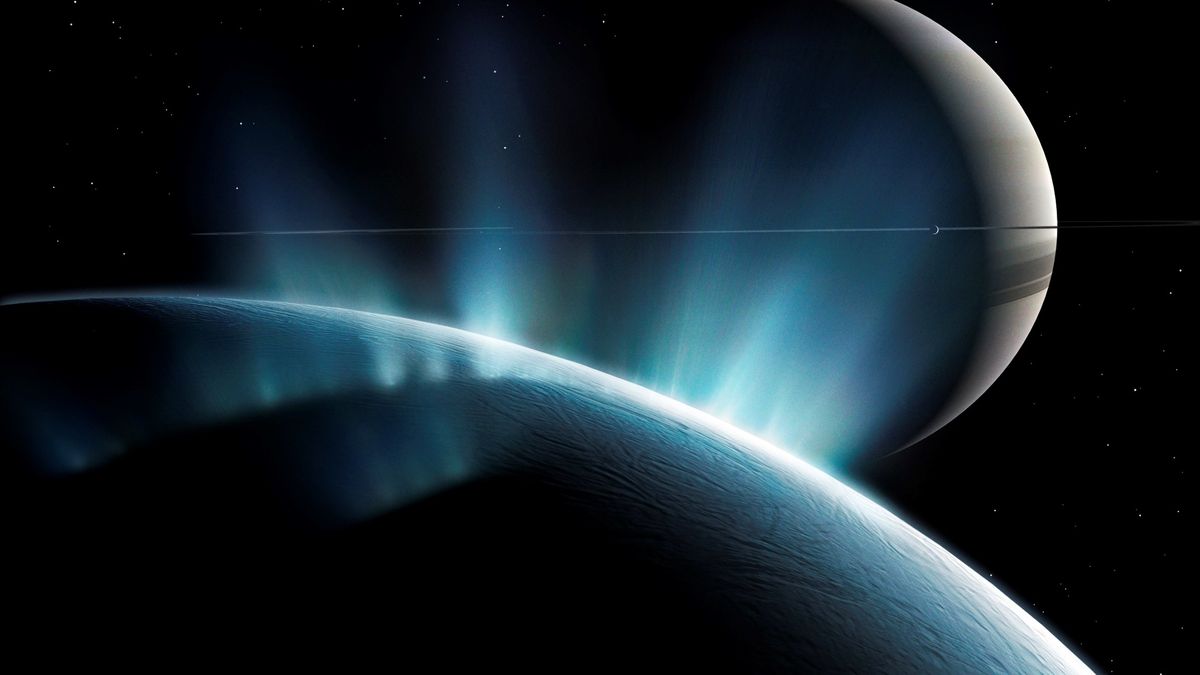
Enceladus is Saturn's sixth-largest moon and one of the most promising potential sites in the solar system for hosting life.
It orbits Saturn within the planet’s E-ring, and continually spews out a concoction of water and simple organic chemicals into space, at around 800 miles per hour (400 meters per second) forming huge plumes that extend hundreds of miles into space according to NASA. While some of the material falls back to the icy world, some escapes and feeds Saturn's large E ring.
Because Enceladus is coated in clean, highly reflective ice, it has the brightest surface of any object in our solar system. However, its surface is not uniform, with some of it being highly cratered and other areas being almost entirely crater-free, according to NASA. Scientists think this points to relatively recent geological processes that enabled Enceladus to renew its surface.
Like other icy moons that orbit gas giants, it's thought that Enceladus maintains a liquid subsurface ocean through tidal heating. Enceladus is closer to Saturn at some points than others, causing Saturn's gravity to generate intense tides and friction, which dissipates as heat.
Related: Saturn's moons: Facts about the weird and wonderful satellites of the ringed
According to recent research, Enceladus' subsurface ocean likely contains most, if not all of the chemical ingredients necessary for life. The Voyager spacecrafts' (Voyager 1 and Voyager 2) collected some of the first real data on Enceladus, while the Cassini spacecraft took the first close-up photographs of the moon, as well as collected detailed data on its chemical composition. Proposed future missions to Enceladus would study the moon's geology, chemistry, and potential to sustain life.
Who discovered Enceladus and when?
Enceladus was discovered on Aug. 28, 1789, by British astronomer, Sir William Herschel The icy satellite was the first of two moons discovered by Herschel — he found Mimas several weeks later on Sept. 17, 1789.
It's likely Herschel discovered both moons, using his 40-ft telescope, which at the time was the largest in the world. Herschel's sister, the astronomer Caroline Herschel, helped construct the telescope, for which she received a small pension, making her the first woman in England to be paid as an astronomer.
Where did Enceladus get its name?
Like the other moons of Saturn, Enceladus went nameless for years. Until Herschel's son, John, published a work titled "Results of Astronomical Observation made at the Cape of Good Hope", in 1847, suggesting that the first seven Saturnian moons discovered were to be named after the Titans. His reasoning behind this was that Saturn is known as Cronus in Greek mythology and Cronus is the leader of the Titans, according to these resources from NASA.
What is Enceladus' surface like?
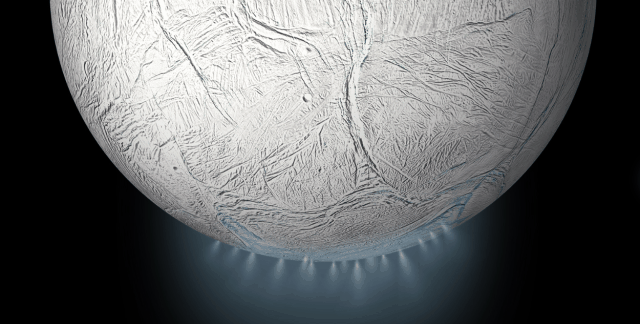
Despite its extremely cold exterior, it's clear that it is geologically active under its bright white surface. In addition to evidence pointing to the recent regeneration of the surface of Enceladus in some areas, plumes spewing Enceladas' ocean into space contain chemicals suggesting that the moon's seafloor may be rocky and contain hydrothermal vents, like Earth's seafloor. This is particularly intriguing because scientists think these kinds of conditions led to the origin of life on Earth, according to The Planetary Society.
According to NASA, the material Enceladus spews out is made of water vapor, carbon dioxide, methane, and several other cases, which may include ammonia, nitrogen gas, and carbon monoxide. It also contains salts and nanograins of the mineral silica, which only forms on Earth during the interaction of rock with very hot water, suggesting that Enceladus has hydrothermal vents.
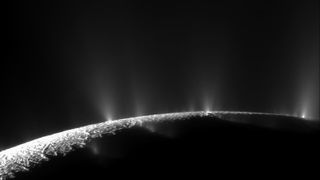
At least 101 geysers vent icy material from beneath the moon's surface into space as the moon interacted with its parent planet. Gravitational forces open and close the cracks as Enceladus travels closer to and farther from Saturn over the course of its elliptical 1.37-Earth-day orbit.
The geysers are at their strongest when the moon is farthest from Saturn, but the gas output does not increase at that time. This is counterintuitive to what scientists thought and suggests that something interesting is going on with its internal plumbing. Also, at least some of Enceladus' geysers have decreased their output substantially since the Cassini mission began observing them in 2015, but the exact reason is not yet known.
Although the freezing moon should be too cold for liquid water, the presence of ammonia in the material streaming from Enceladus could act as antifreeze to keep water beneath the surface from freezing. The acidity detected from Enceladus' plumes also doesn't rule out life.
Enceladus is only one-seventh the diameter of Earth's moon. It is the sixth largest and most massive moon of Saturn. Like most spherical bodies, it takes the shape of an oblate spheroid, bulging out slightly around its equator due to the effects of gravity as it spins.
Because the moon is rather small and feels only the smallest tug of gravity at its surface, scientists were surprised to discover that Enceladus has an atmosphere, which dominates at its warmer south pole.
Enceladus key facts
Age
Enceladus is likely about a billion years old, according to an April 2019 study. That could make it the perfect age to potentially support life, according to study author and NASA research scientist Marc Neveu. However, the study was based on the result of a single computer simulation, and it’s hard to know for sure how old Enceladus might be. Earlier research suggested that Enceladus and several of Saturn’s other moons formed as recently as 100 million years ago.
Distance from Saturn
Orbiting between moons Mimas and Tethys, Enceladus circles Saturn from about 148,000 miles away. It takes about 33 hours for it to complete one orbit. Like our own moon, Enceladus is tidally locked with Saturn, meaning that the same side always faces the planet. It also has what's called an orbital resonance, where the interaction of gravity between Enceladus and one of Saturn's larger moons, Dione, causes the moons to line up at regular intervals. Dione orbits Saturn exactly once in the time it takes Enceladus to orbit twice. The effect of Dione's gravity elongates Enceladus' orbit, making Dione responsible for the smaller moon's tidal heating, and thus, possibly responsible for its subsurface ocean remaining liquid.
Size
Though it is one of Saturn's larger moons (the planet has 145 known moons in total), Enceladus is only about 315 mi (500 km) across, which is about as wide as the state of Arizona. That makes it only about one-seventh the size of Earth's moon. Enceladus is losing mass at the rate of about 440 lbs (200 kilograms) per second through the ocean material it ejects via geysers. However, research suggests that the rate at which Enceladus is losing mass may be slowing down due to reduced geyser activity.
Temperature
Enceladus reflects up to 90% of the light that hits its icy surface, which is what makes it the brightest white known in our solar system. That also makes it extremely cold, with an average temperature of -330 degrees Fahrenheit (-201 degrees Celsius). Enceladus is warmest at its south pole, where scientists think the heat from its interior is escaping, causing its spewing of water vapor into space through its "tiger stripes," or large cracks in its surface ice that crisscross the moon's surface. However, the Cassini spacecraft determined that even the small areas most impacted by this heat were still a cool -261 degrees Fahrenheit (-163 degrees Celsius).
Enceladus FAQs answered by an expert
We asked Erin Leonard, a research scientist at NASA's Jet Propulsion Laboratory a few frequently asked questions about Enceladus.

Leonard is a research scientist at NASA's Jet Propulsion Laboratory. Her research includes studying the geology of icy moons and characterizing Ice Giants. She is the lead author on the new global geologic map of Europa for the United States Geologic Survey (USGS).
Does Enceladus have an atmosphere?
Enceladus has an exosphere, which is the scientific way of saying that it has a very thin and variable atmosphere. The exosphere at Enceladus is mostly made up of water vapor and is primarily sourced from the plume activity near the South Pole. These plumes are fed by jets of water ice venting from the moon's interior.
Could there be life on Enceladus?
Enceladus could maintain a habitable environment for microbial-like life within its subsurface ocean. The Cassini spacecraft returned data that suggest that the subsurface ocean on Enceladus may be in contact with rock and that there is a significant amount of heat present associated with the plume activity. We do not yet understand if or how long Enceladus has maintained these conditions associated with sustaining a habitable environment that could support life, and therefore we do not know if life could exist there. So, it is possible that Enceladus could host life, but we need to go back and learn more!
Why is Enceladus an interesting target for research?
Enceladus is such a small moon, only about 314 miles (504 km) across. I drive more miles when I take a road trip from Los Angeles to San Francisco! Because of its size, it should have lost much of its internal heat and frozen solid long ago, so it is particularly interesting that it is active rather than a cold, dead ball of ice. It turns out that this little moon is kept warm by the tidal forces imparted on it as it orbits Saturn every 33 hours.
Additionally, there is evidence that subsurface liquid water may be in contact with rock in the interior of the moon, which is intriguing because we think life on Earth emerged under similar conditions long ago. However, without understanding how long these types of conditions have been present on Enceladus and whether the subsurface water can maintain a sustained habitable environment, we just do not know how habitable Enceladus may be.
As a planetary geologist, I am also particularly interested in how the structures on Enceladus' surface formed as these features can provide a window into the past, informing us on how Enceladus came to be how it is and how it might evolve in the future.
Additional resources
Find out more about Saturn and its moons with The Planetary Society. Take a free course on the moons of our solar system with The Open University to expand your knowledge. Explore 10 mysteries about Saturn's moons that scientists are eager to solve, with this feature from NASA Science.
Bibliography
Enceladus In-depth, NASA: https://solarsystem.nasa.gov/moons/saturn-moons/enceladus/in-depth/
Phosphorous and the prospects of life on Enceladus, NASA astrobiology: https://astrobiology.nasa.gov/news/phosphorus-and-the-prospects-for-life-on-enceladus/
40-foot Herschelian (reflector) telescope tube remains, Royal Museums Greenwich: https://www.rmg.co.uk/collections/objects/rmgc-object-11109
Enceladus science, NASA: https://solarsystem.nasa.gov/missions/cassini/science/enceladus/
Mass loss as a driving mechanism of tectonics of Enceladus, L. Czechowski, EGU General Assembly 2015: https://ui.adsabs.harvard.edu/abs/2015EGUGA..1710033C/abstract
Enceladus temperature map: NASA: https://www.nasa.gov/mission_pages/cassini/multimedia/pia06432.html
Join our Space Forums to keep talking space on the latest missions, night sky and more! And if you have a news tip, correction or comment, let us know at: community@space.com.
Get the Space.com Newsletter
Breaking space news, the latest updates on rocket launches, skywatching events and more!

Rebecca Sohn is a freelance science writer. She writes about a variety of science, health and environmental topics, and is particularly interested in how science impacts people's lives. She has been an intern at CalMatters and STAT, as well as a science fellow at Mashable. Rebecca, a native of the Boston area, studied English literature and minored in music at Skidmore College in Upstate New York and later studied science journalism at New York University.
- Daisy DobrijevicReference Editor




